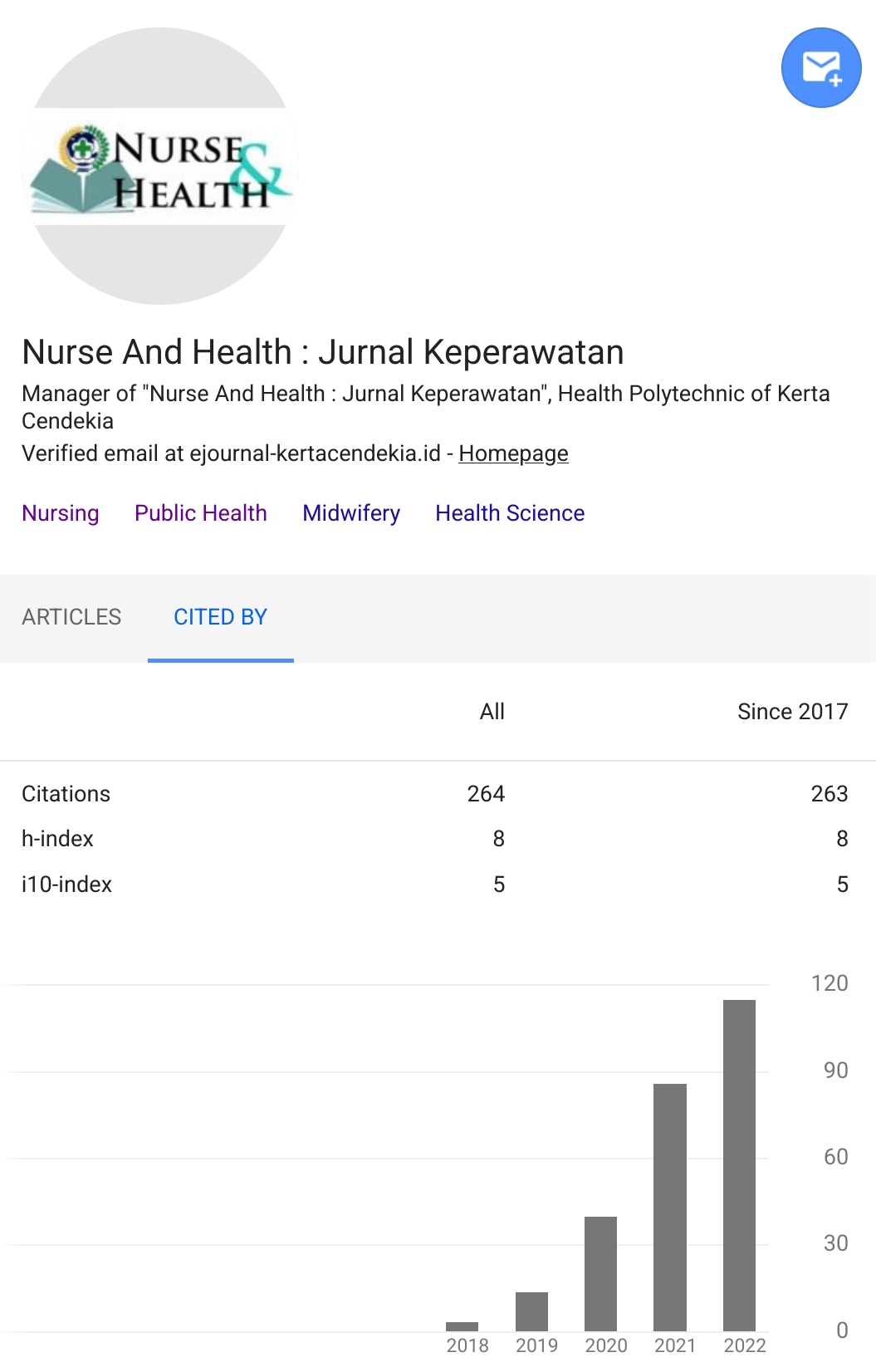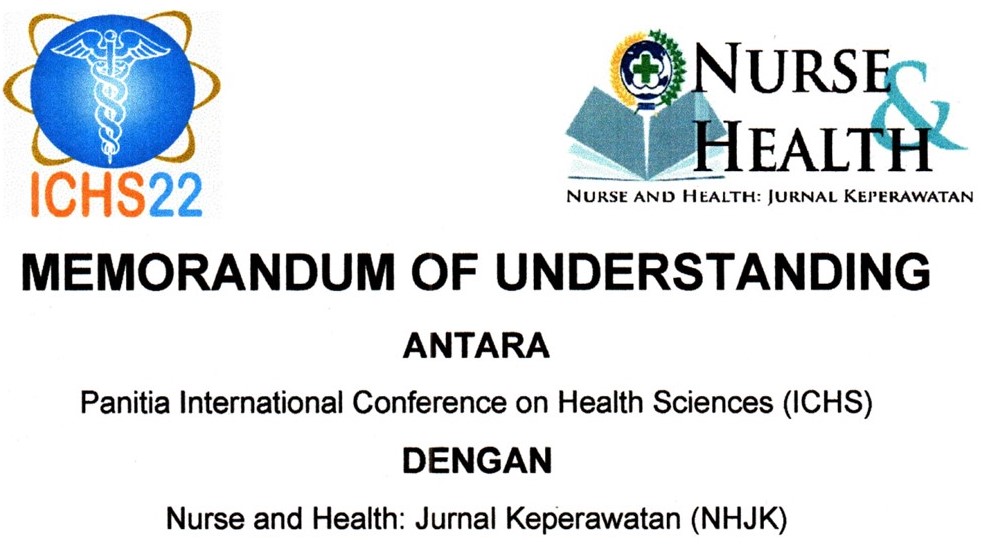COMPASSION FATIGUE IN HEMODIALYSIS NURSES: A SCOPING REVIEW
Abstract
Background: The high prevalence of chronic kidney disease has led many patients to undergo hemodialysis therapy, making them dependent on nurses for their care procedures. Hemodialysis nurses are not only responsible for performing dialysis but also for providing education, emotional support, and patient advocacy. This results in a high workload and an increased risk of experiencing compassion fatigue. Such conditions can negatively impact nurses' well-being and the quality of healthcare services due to physical exhaustion, emotional stress, and prolonged burnout. Objective: To analyze a review on compassion fatigue in hemodialysis nurses. Design: Scoping Review. Data Sources: The search was conducted using Google Scholar, PubMed, and EBSCO databases, with articles limited to the time range of 2015–2025. The search term used in Google Scholar was “intitle:compassion fatigue AND intext:hemodialysis nurse”, while in PubMed and EBSCO, the keyword used was “compassion fatigue AND hemodialysis nurse”. Review Methods: This scoping review follows the Preferred Reporting Items for Systematic Reviews and Meta-Analyses model, and the collected search results were synthesized for data analysis. Results: A total of six research articles were analyzed, which were then summarized based on the level of compassion fatigue, related factors, symptoms, and interventions applied to hemodialysis nurses. Conclusion: Compassion fatigue in hemodialysis nurses is influenced by workload, emotional interactions, and lack of social support. Further research is needed to standardize measurement tools, explore demographic and psychological factors, and develop effective interventions to enhance nurses' well-being and improve patient care quality.Downloads
References
Alharbi, J., Jackson, D., & Usher, K. (2020). Personal characteristics, coping strategies, and resilience impact on compassion fatigue in critical care nurses: A cross‐sectional study. Nursing & Health Sciences, 22(1), 20–27. DOI: https://doi.org/10.1111/nhs.12650
Arksey, H., & O’Malley, L. (2005). Scoping studies: Towards a methodological framework. International Journal of Social Research Methodology, 8(1), 19–32. DOI: https://doi.org/10.1080/1364557032000119616
Cao, X., & Chen, L. (2021a). Relationships between resilience, empathy, compassion fatigue, work engagement and turnover intention in haemodialysis nurses: A cross‐sectional study. Journal of Nursing Management, 29(5), 1054–1063. DOI: https://doi.org/10.1111/jonm.13243
Cao, X., & Chen, L. (2021b). The impact of resilience on turnover intention in dialysis nurses: The mediating effects of work engagement and compassion fatigue. Japan Journal of Nursing Science, 18(3), e12414. DOI: https://doi.org/10.1111/jjns.12414
Chen, Y., Ding, J., Li, C., Wu, T., Li, Q., Chen, R., & Zhou, J. (2022). [Retracted] Study on Nursing Effect of Psychological Intervention on Uremic Hemodialysis Patients. Computational and Mathematical Methods in Medicine, 2022(1), 8040656. DOI: https://doi.org/10.1155/2022/8040656
Crandall, J., Harwood, L., Wilson, B., & Morano, C. (2022). Mindful Self-Compassion Training and Nephrology Nurses’ Self-Reported Levels of Self-Compassion, Burnout, and Resilience: A Mixed Methods Study. Nephrology Nursing Journal, 49(5). DOI: https://doi.org/10.37526/1526-744X.2022.49.5.405
EunJin, R., & Eun, C. S. (2017). Effects of emotional labor, compassion fatigue and occupational stress on the somatization of nurses in hemodialysis units. Korean Journal of Occupational Health Nursing, 26(2), 65–73.
Figley, C. R. (2013). Compassion fatigue: Coping with secondary traumatic stress disorder in those who treat the traumatized. Routledge.
Gustafsson, T., & Hemberg, J. (2022). Compassion fatigue as bruises in the soul: A qualitative study on nurses. Nursing Ethics, 29(1), 157–170. DOI: https://doi.org/10.1177/09697330211003215
Jeong, E., & Jung, M.-R. (2018). Influences of compassion satisfaction, compassion fatigue, and burnout on positive psychological capital of clinical nurses. The Journal of the Korea Contents Association, 18(3), 246–255.
Kallenbach, J. Z. (2020). Review of Hemodialysis for Nurses and Dialysis Personnel-E-Book: Review of Hemodialysis for Nurses and Dialysis Personnel-E-Book.
Kemenkes RI. (2023). Permudah Akses Masyarakat, Wamenkes Resmikan Layanan Hemodialisis RS Hasri Ainun Habibie. https://sehatnegeriku.kemkes.go.id/baca/umum/20231023/1544088/permudah-akses-masyarakat-wamenkes-resmikan-layanan-hemodialisis-rs-hasri-ainun-habibie/#:~:text=Terlebih%2C%20saat%20ini%20235%20dari,bertambahnya%20jumlah%20penduduk%20usia%20lanjut. Diakses Pada 16 Juni 2024 Pukul 17.01 WIB
Kepmenkes RI. (2023). Keputusan Menteri Kesehatan Republik Indonesia Nomor Hk.01.07/Menkes/1634/2023 Tentang Pedoman Nasional Pelayanan Kedokteran Tata Laksana Ginjal Kronik.
Nolte, A. G., Downing, C., Temane, A., & Hastings‐Tolsma, M. (2017). Compassion fatigue in nurses: A metasynthesis. Journal of Clinical Nursing, 26(23–24), 4364–4378. DOI: https://doi.org/10.1111/jocn.13766
Prayogo, M. (2023). Pengaruh Self-Compassion terhadap Compassion Fatigue pada Perawat Hemodialisis. DOI: https://doi.org/10.20473/brpkm.v3i2.50123
Rahayu, C. E. (2019). Pengaruh Kepatuhan Diet Pada Pasien Gagal Ginjal Kronis Di Unit Hemodialisa Rumah Sakit Sumber Waras. Jurnal Ilmiah Kesehatan, 11(1), 12–19. https://doi.org/10.37012/jik.v11i1.63 DOI: https://doi.org/10.37012/jik.v11i1.63
Rocha, M., Oliveira, C. M. de, Fecury, A. A., Dendacsk, C., Dias, C., & Oliveira, E. de. (2017). The role of nursing in the hemodialysis session. Multidiscip Sci j, 2, 39–52. DOI: https://doi.org/10.32749/nucleodoconhecimento.com.br/health/hemodialysis
Ryu, I. S., & Shim, J. L. (2022). The relationship between compassion satisfaction and fatigue with shift nurses’ patient safety-related activities. Iranian Journal of Public Health, 51(12), 2724. DOI: https://doi.org/10.18502/ijph.v51i12.11463
Sanli, P. D., & Herlina, S. (2022). Hubungan Caring Perawat Dengan Tingkat Kecemasan Pada Pasien Hemodialisa Dengan Covid-19 Di Rsud Koja Jakarta. Jurnal Keperawatan Widya Gantari Indonesia, 6(2), 96. https://doi.org/10.52020/jkwgi.v6i2.3272 DOI: https://doi.org/10.52020/jkwgi.v6i2.3272
Siregar, C. T., Zulkarnain, Z., Nasution, S. Z., & Ariga, R. A. (2020). Nurse Needs, Hope, and Satisfaction during Hemodialysis Care in Medan Indonesia. Open Access Macedonian Journal of Medical Sciences, 8(E), 363–366. DOI: https://doi.org/10.3889/oamjms.2020.3655
Stamn, B. (2010). The Concise ProQOL Manual: The Concise Manual for the Professional Quality of Life Scale. 2010-03-02)[2023-06-01]. Http://Proqol. Org/Proqol-Manual.
Topbaş, E., Bay, H., Turan, B. B., Çıtlak, U., Emir, A. H., Erdoğan, T. K., & Akkaya, L. (2019). The effect of perceived organisational justice on job satisfaction and burnout levels of haemodialysis nurses. Journal of Renal Care, 45(2), 120–128. DOI: https://doi.org/10.1111/jorc.12271
Wang, Y., Xiong, Y., Zhang, Y., Li, C., Fu, L., Luo, H., & Sun, Y. (2022). Compassion fatigue among haemodialysis nurses in public and private hospitals in China. International Journal of Nursing Practice, 28(1), e13011. DOI: https://doi.org/10.1111/ijn.13011
Wu, S. (2016). Compassion fatigue, burnout, and compassion satisfaction among oncology nurses in the United States and Canada. Number 4/July 2016, 43(4), E161–E169. DOI: https://doi.org/10.1188/16.ONF.E161-E169
Copyright (c) 2025 Suci Wulandari Sassanti, Titin Andri Wihastuti, Dina Dewi Sartika Lestari Ismail

This work is licensed under a Creative Commons Attribution-NonCommercial 4.0 International License.
Authors who publish with Nurse and Health: Jurnal Keperawatan agree to the following terms:
- Authors retain copyright licensed under a Creative Commons Attribution-NonCommercial 4.0 (CC BY-NC 4.0), which allows others to remix, tweak, and build upon the authors' work non-commercially, and although the others' new works must also acknowledge the authors and be non-commercial, they don't have to license their derivative works on the same terms.
- Authors are permitted and encouraged to post their work online (e.g., in institutional repositories or on their website) prior to and during the submission process, as it can lead to productive exchanges, as well as earlier and greater citation of published work (See The Effect of Open Access). Authors can archive pre-print and post-print or publisher's version/PDF.






















